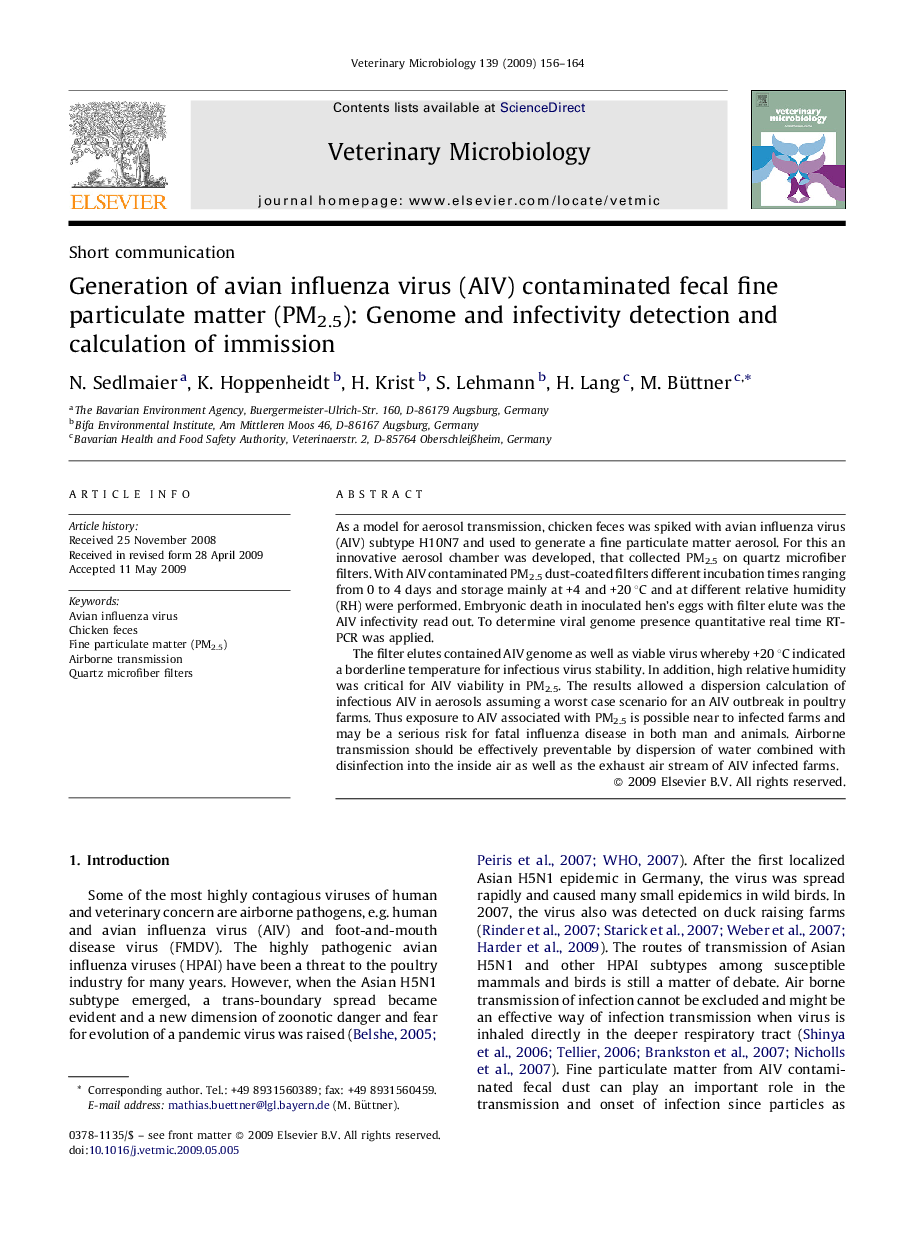| Article ID | Journal | Published Year | Pages | File Type |
|---|---|---|---|---|
| 2468235 | Veterinary Microbiology | 2009 | 9 Pages |
As a model for aerosol transmission, chicken feces was spiked with avian influenza virus (AIV) subtype H10N7 and used to generate a fine particulate matter aerosol. For this an innovative aerosol chamber was developed, that collected PM2.5 on quartz microfiber filters. With AIV contaminated PM2.5 dust-coated filters different incubation times ranging from 0 to 4 days and storage mainly at +4 and +20 °C and at different relative humidity (RH) were performed. Embryonic death in inoculated hen's eggs with filter elute was the AIV infectivity read out. To determine viral genome presence quantitative real time RT-PCR was applied.The filter elutes contained AIV genome as well as viable virus whereby +20 °C indicated a borderline temperature for infectious virus stability. In addition, high relative humidity was critical for AIV viability in PM2.5. The results allowed a dispersion calculation of infectious AIV in aerosols assuming a worst case scenario for an AIV outbreak in poultry farms. Thus exposure to AIV associated with PM2.5 is possible near to infected farms and may be a serious risk for fatal influenza disease in both man and animals. Airborne transmission should be effectively preventable by dispersion of water combined with disinfection into the inside air as well as the exhaust air stream of AIV infected farms.
